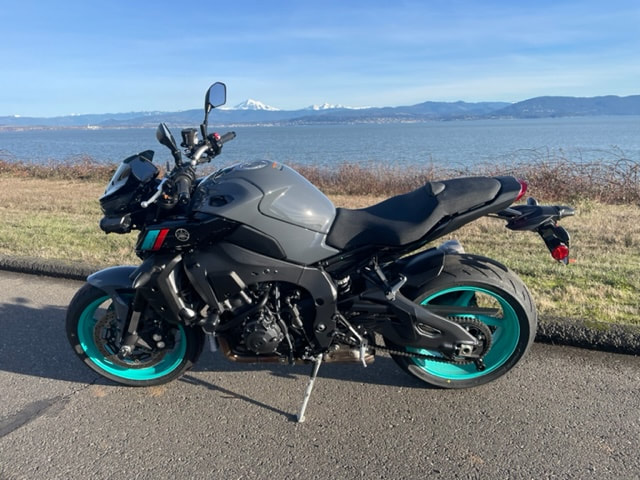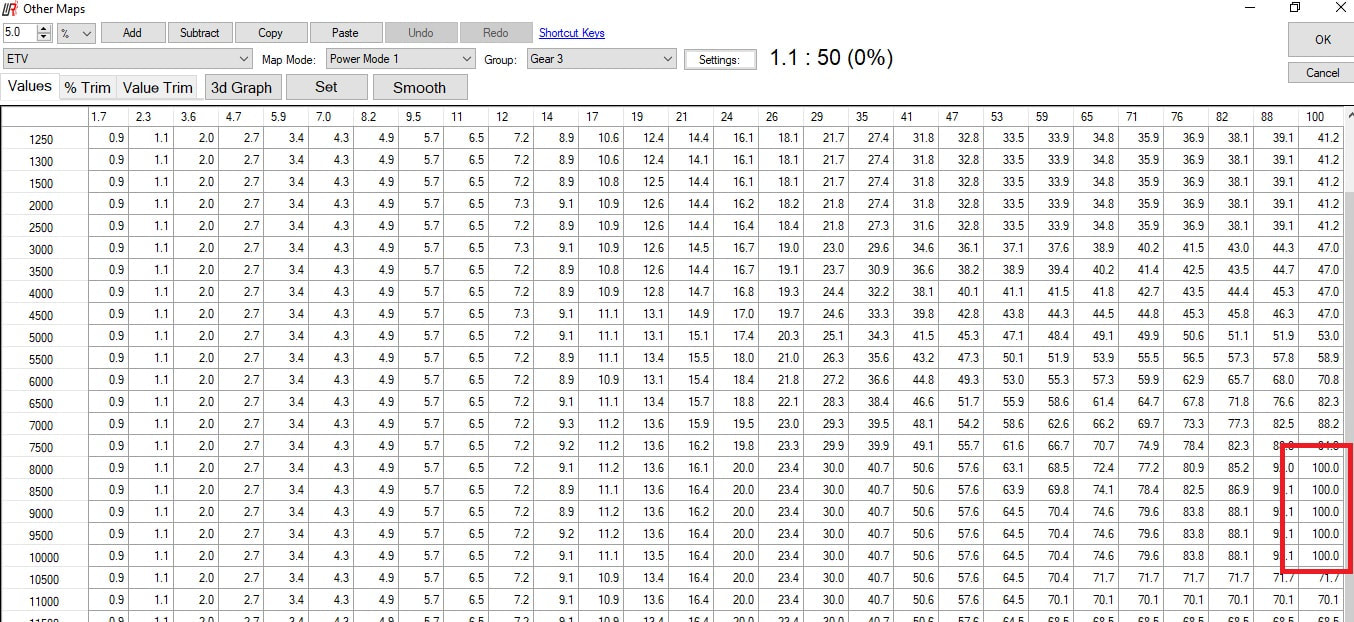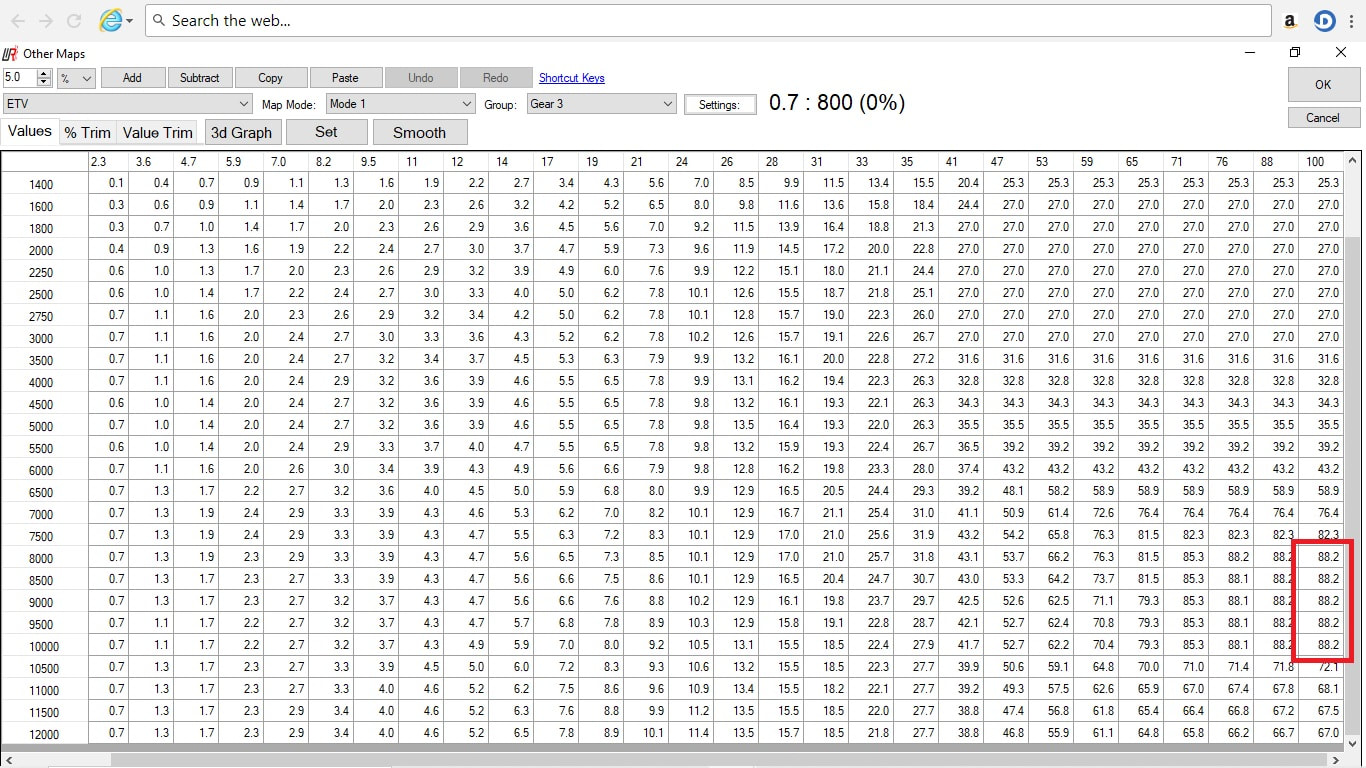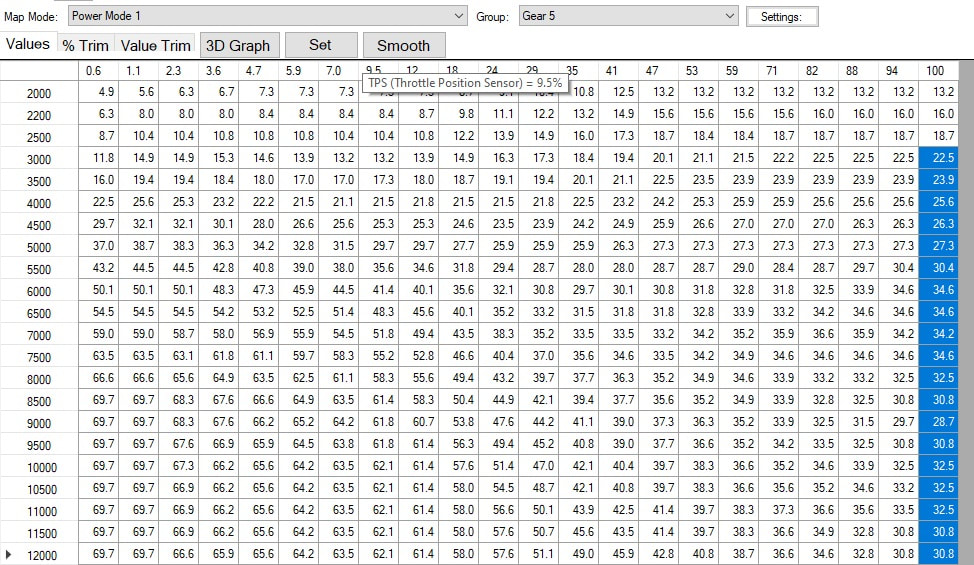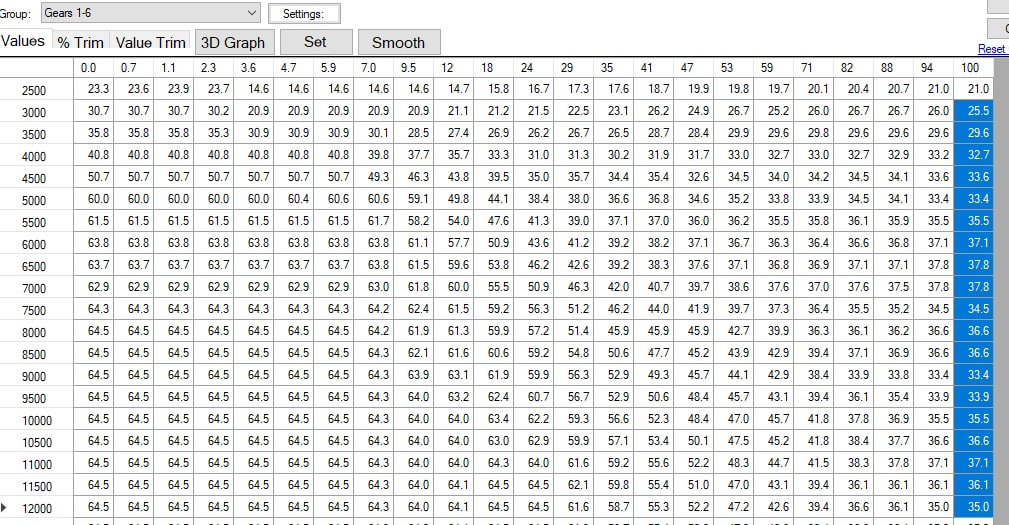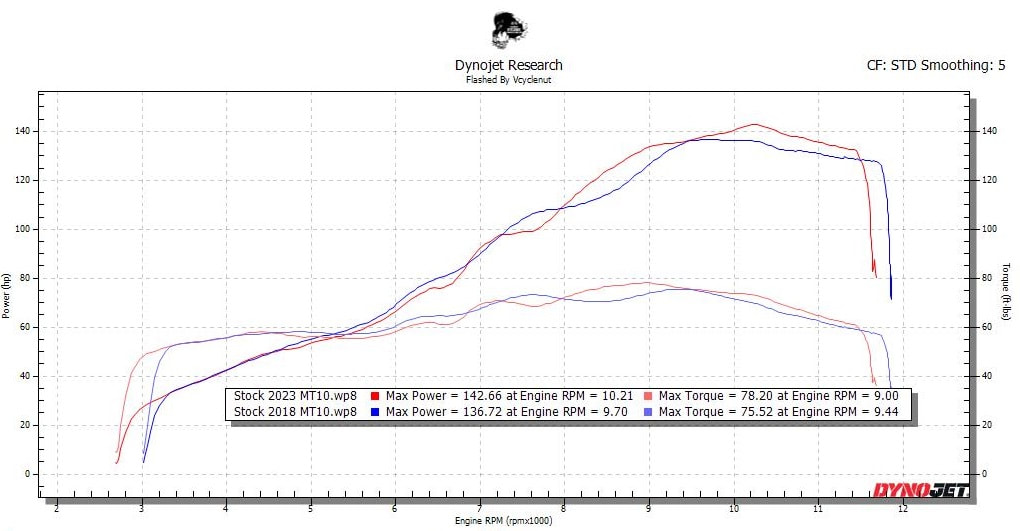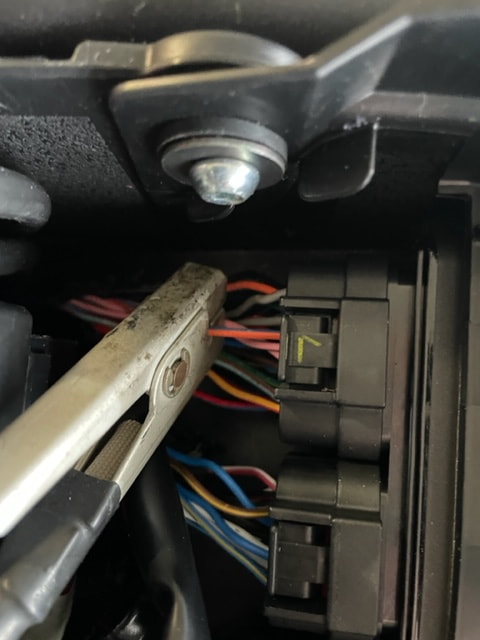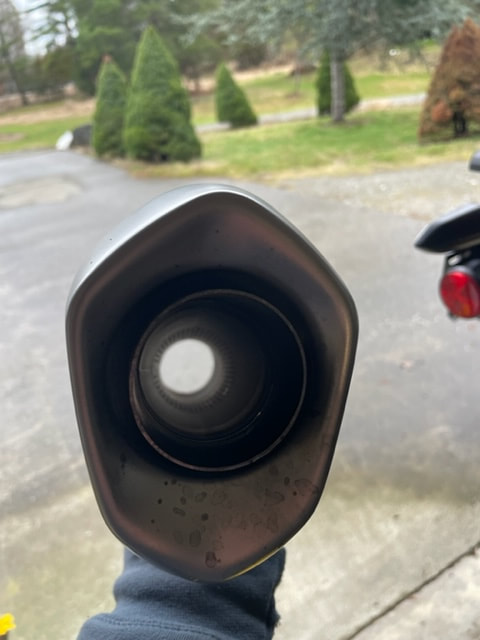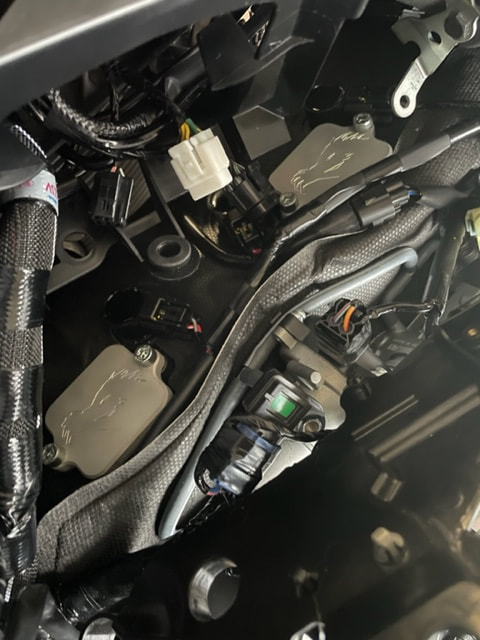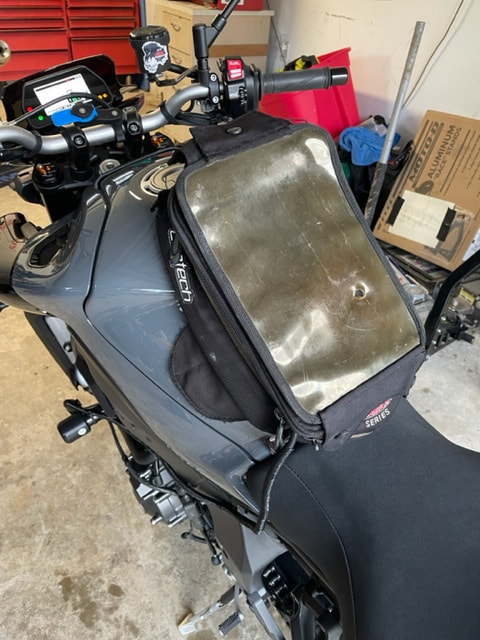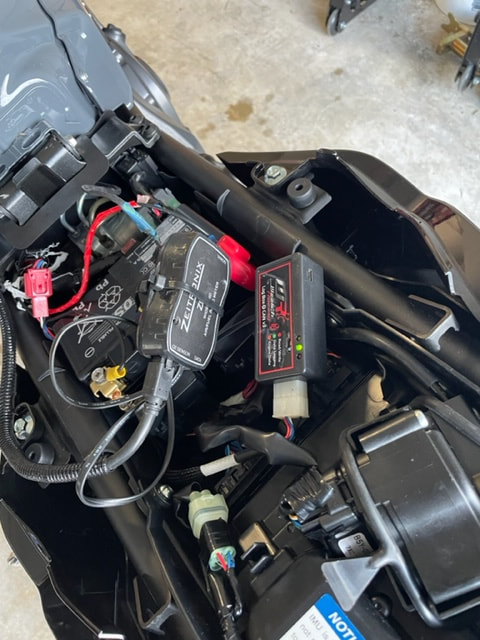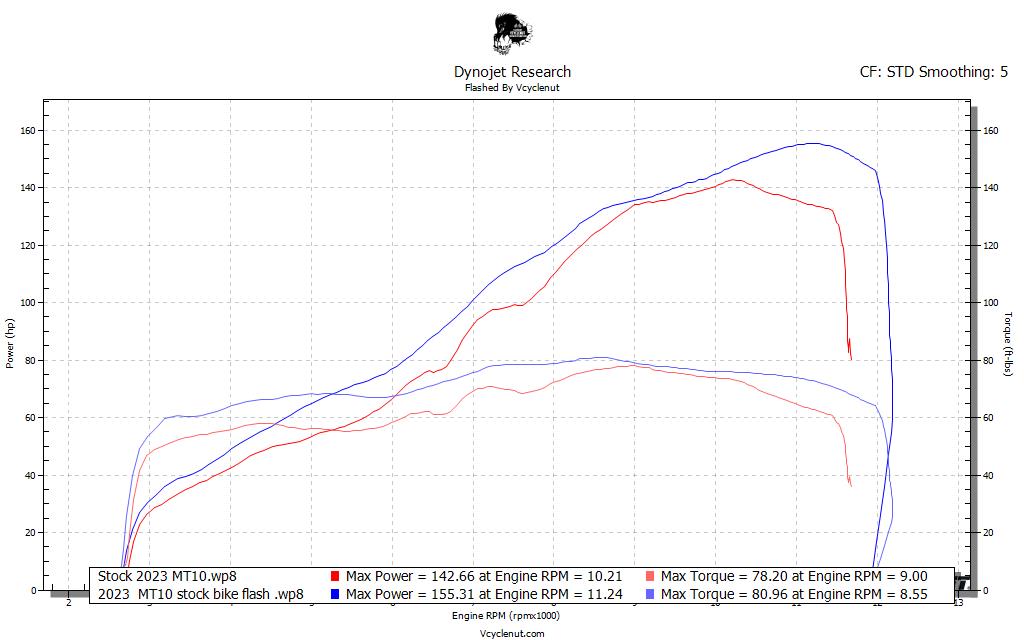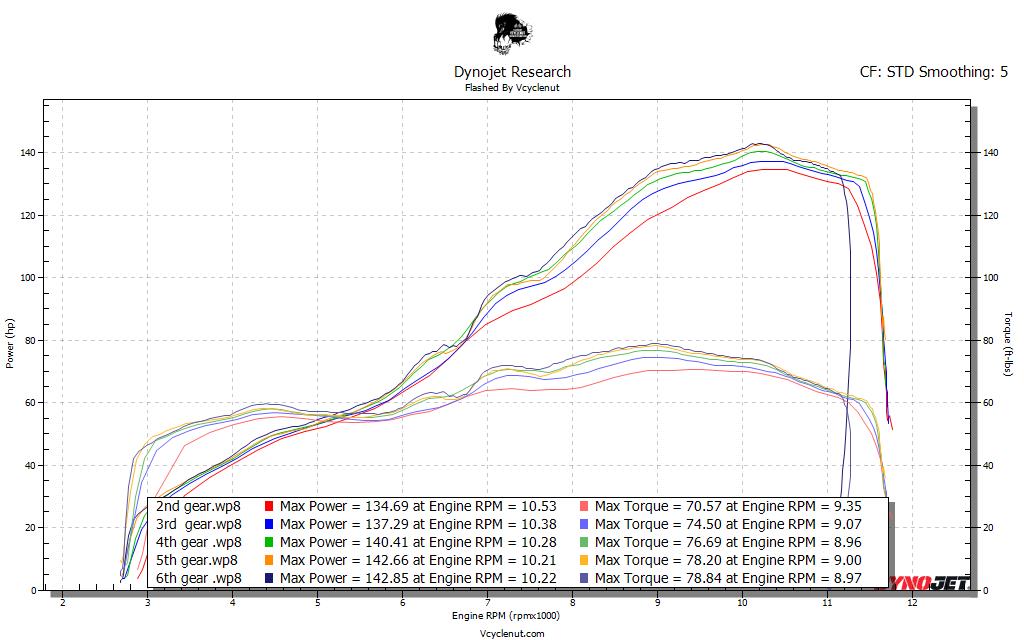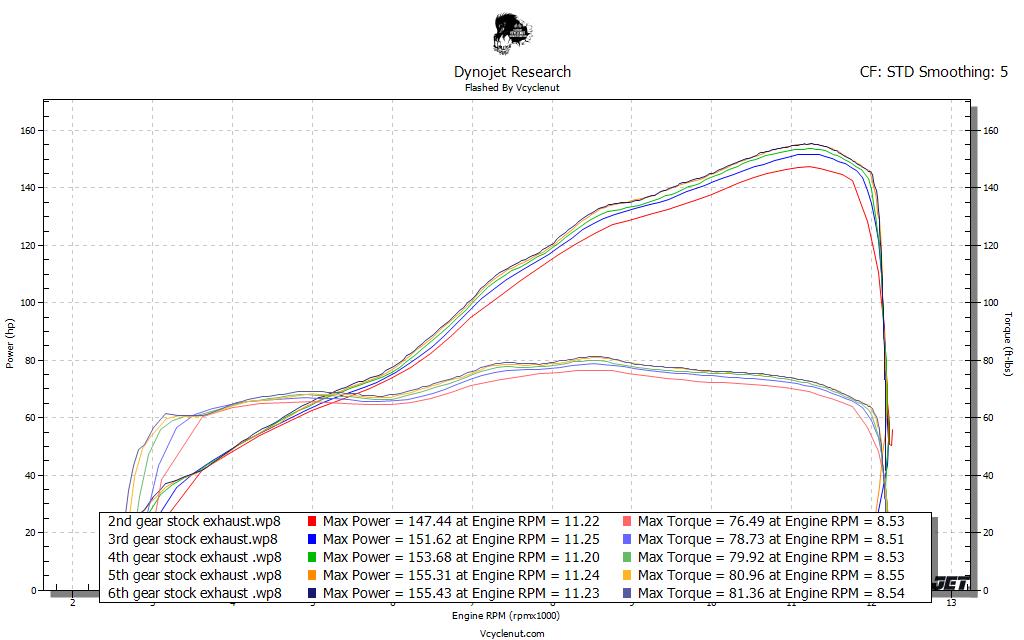2022- 2023 MT10
I have flashed 100's of the previous generation MT10's but the 2022/23 is different in some critical ways that make it require new testing data.
The fueling tables have more rows and columns for finer adjustments and the IAP tables are reversed. On the previous generation, zero was to the right & on the new zero is to the left. This makes it impossible to accurately transfer previous tuning data to the new bike.
There are also changes to the intake system.
The new bike has a stock redline of 11,400 vs 11,900.
There are more restrictions in the throttle tables.
The first table is the previous generation Power mode 1 gear 3. You can see from 8000-10000 rpm the bike achieves 100% throttle before the ecu closes the throttle.
First table is the old bike ignition timing table
Peak power I actually showed the 6 hp gain claimed by Yamaha with the previously mentioned different shape curve. Once fully tuned I would expect similar shaped power curves with similar peak numbers.
The following chart shows red for the new bike, blue the old. Both bikes in 5th gear.
stock exhaust at idle: 62.4 DB during dyno run : 116.5 DB
If you are sending me the ECU I created a tip sheet to help you remove it. It is located in the MT10 specific section of my garage.
MT10 Garage - FLASHED BY VCYCLENUT
1) The flash developed for the stock bike will work perfectly with any aftermarket slip on
2) Adding just a cat eliminator pipe will give the same performance as a full aftermarket cat eliminator system. This offers an incredible value
MT10 Garage - FLASHED BY VCYCLENUT
I also sell the block off plate kits
FZ/MT10 Vcyclenut Block of Plate Kit
I remember the original CBR900 you could put a 6 pack under the back seat in the tail section! There is not enough room on the MT10 to even put 2 small boxes that are about the size of a pack of cigarette's!! So I had to pull an old magnetic tank bag out to put the devices used to collect the data.
The result is an extremely smooth powerful motorcycle.
Transition from closed throttle to open throttle is almost seamless with excellent throttle control at all rpm's and throttle positions. This is especially true in power mode 2 & 3.
I kept power mode 1 a bit aggressive, which I find fun when riding in situations that I do not need precise throttle control.
With my flash modes 1-3 all make full power at full throttle with power mode 4 left as stock. The difference in modes 1-3 is the aggressiveness of the throttle. Mode 1 being the most aggressive , 2 less aggressive and 3 even less so. This gives you a power mode for any condition or situation.
The smoothness of both the bike and power delivery is very noticeable over the stock bike. The stock power curve is almost embarrassingly lumpy, especially for a liter bike. There are big dips and holes. The power curve is now much smoother with no big dips. This gives a much smoother delivery which helps coming off corners. The bike is stronger at all rpm's and it is noticeable when twisting the throttle. The combination of smooth yet responsive throttle is the way the bike should have come from the factory.
Below is the dyno run comparing the stock bike (red) to stock bike with my flash (blue). A peak to peak gain of almost 13 hp with an increase in area under the curve that is pretty crazy.
- IAP Fuel Maps
- TPS Fuel Maps
- Ignition Timing Maps
- Electronic Throttle Valve (ETV) Maps
- Electronic Throttle Valve Deceleration Maps
- Injector Balance Map/s
- Idle RPM
- Fan Temperature
- Disable Evap / Purge Valve
- Disable Stock O2 Sensor
- Disable Deceleration Fuel Cut
- Disable Exhaust Valve (not on stock bike)
- Disable PAIR Valve / AIS (optional)
- Disable Top Speed Limiter
- Rev limiter raised to 12000 rpm
2022-24 MT 10 ECU FLASH
This is the page to purchase the flash for :
2022 - 2023 MT10
To see information on this flash with testing results please see my 2022+ MT10 specific page
2022-2023 MT10 - FLASHED BY VCYCLENUT
for previous years purchase here
FZ/MT 10 ECU flash (2016-2021) (vcyclenut.com)
For help with ECU removal
MT10 Garage - FLASHED BY VCYCLENUT
please fill out and send this form with your ecu . This is how you will tell me your modifications and what you want from the flash
flash Information sheet to send in with your ecu - FLASHED BY VCYCLENUT
FOR THE CRUISE CONTROL TO WORK THE EXUP, AIS AND O2 SENSORS MUST REMAIN PLUGGED IN. THEY CAN BE DISABLED IN THE SOFTWARE AND STAY PLUGGED IN
YOU WILL GET AN INITIAL CHECK ENGINE LIGHT AFTER THE FLASH. IT WILL CLEAR ON ITS OWN AFTER APPROX. 20 MILES AND A KEY CYCLE. AFTER IT CLEARS THE DIAGNOSTIC SYSTEM WILL FUNCTION AS NORMAL
